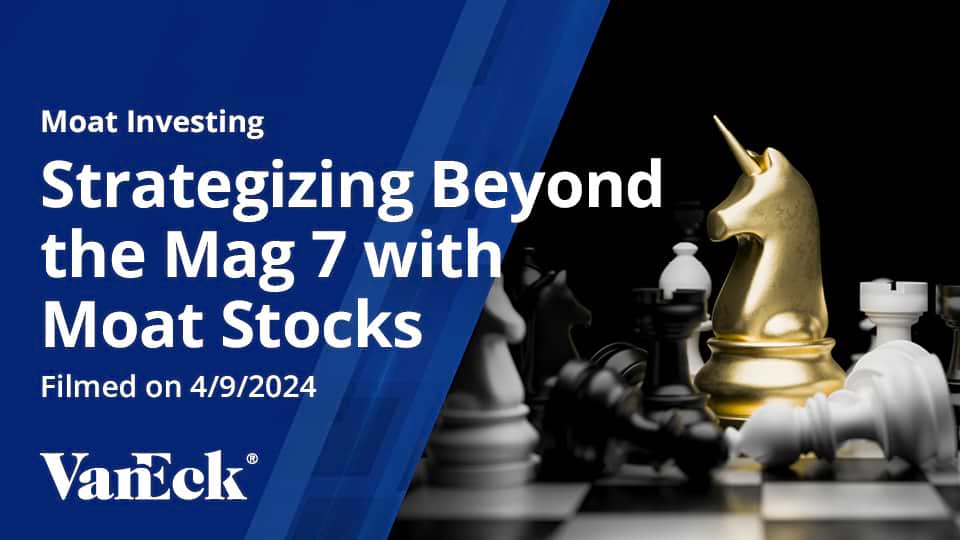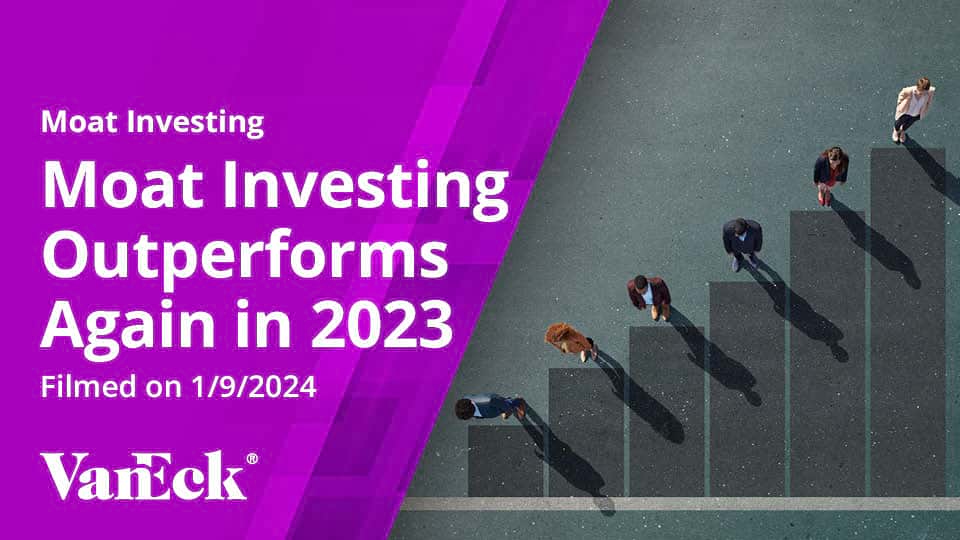Moat Stocks Show Resilience Amid Recent Volatility
10 February 2022
Read Time 4 MIN
The Morningstar Wide Moat Focus Index’s style exposure and stock selection were key to its resilience through January’s market turmoil.
The Morningstar® Wide Moat Focus IndexSM (the “Moat Index” or “Index”) began 2022 with a notable display of the resiliency it has historically exhibited through periods of market turmoil. The Index finished January well ahead of the S&P 500 Index, with defensive characteristics on display. The Moat Index posted a loss of -2.27% for the month, almost half of the S&P 500’s loss of -5.17%. Some of the Index’s outperformance can be attributed to its style exposure, notably its underweight to growth and overweight to value. However, stock selection proved beneficial in January, particularly from several companies that contributed to the Moat Index’s 2021 underperformance.
January Moat Index Standouts
Wells Fargo & Co. (WFC)
The Moat Index is currently underweight financials, which detracted from relative performance as financials performed well compared to other sectors in January. Its stock selection within the financials sectors offset the effects of its underweight. Wells Fargo was one standout in the Index, as it outpaced financials and the banking industry broadly speaking.
The bank reported solid fourth quarter results well ahead of consensus expectations, driven in large part by higher-than-expected net interest income and fee income. Morningstar notes that Wells Fargo remains in the middle of a multiyear rebuild with years of expense savings-related projects ahead of it, but that it has seen glimpses of the bank’s transition to offense from defense.
Morningstar raised Wells Fargo’s fair value estimate to $62 per share from $55 on January 18 to account for flat statutory tax rate expectations and three anticipated interest rate hikes in 2022.
Cheniere Energy Inc. (LNG)
Natural resources companies have generally benefited both from the reopening of the global economy over the last year and rising commodity prices. Materials and energy exposure are typically light in the Moat Index due to a general lack of wide moat rated companies from the sector. Cheniere Energy has been one of the few index constituents from either sector in recent years and has contributed positively as of late.
According to Morningstar, Cheniere benefits from the moat source derived primarily from the 20-year take-or-pay contracts that it has signed with multiple customers to liquefy natural gas. This has put Cheniere in an incredibly strong competitive position as a pure toll-taker with no commodity price risk.
Morningstar believes Cheniere is well-positioned to be the exporter of the incremental liquefied natural gas supplied to the global market over the next few years, particularly as demand ramps up from China. However, they must also address regulatory reforms in Europe that will scrutinize the environmental impacts of U.S. liquefied natural gas producers to avoid losing exposure to the continent, which is a major source of liquefied natural gas demand.
History of Moat Index’s Defensive Characteristics
By nature of investing in companies with competitive advantages that are also attractively priced, the Moat Index has historically offered attractive risk and return characteristics through market downturns. From its live inception in February 2007, the Index has provided attractive relative returns paired with impressive drawdown performance.
Index Risk Statistics
2/2007 – 12/2021
| Annualized Return |
Annualized Standard Deviation |
Sharpe Ratio |
Max Drawdown |
Upside Capture |
Downside Capture |
|
| Moat Index | 13.81 | 18.51 | 0.76 | -35.10 | 106.95 | 85.60 |
| S&P 500 Index | 10.80 | 16.98 | 0.65 | -45.80 | 100.00 | 100.00 |
Source: Morningstar.com Calculated using quarterly returns.
Index performance is not illustrative of Fund performance. Fund performance current to the most recent month end is available by visiting vaneck.com or by calling 800.826.2333. Past performance is no guarantee of future results. Indexes are unmanaged and are not securities in which an investment can be made. Effective June 20, 2016, Morningstar implemented several changes to the Morningstar Wide Moat Focus Index construction rules. Among other changes, the index increased its constituent count from 20 stocks to at least 40 stocks and modified its rebalance and reconstitution methodology. These changes may result in more diversified exposure, lower turnover, and longer holding periods for index constituents than under the rules in effect prior to this date.
Note on a Moat Stock: Meta Platforms
Meta Platforms (the company formerly known as Facebook) reported quarterly results after the close of markets on February 2, sending shares into a free fall the following day. According to Morningstar, revenue was slightly ahead of expectations, but the firm missed on the bottom line due to higher investments in not only the Reality Labs metaverse segment but also in Reels and in overall improvement of its advertising back-end. Its first quarter 2022 revenue guidance was also below consensus estimates.
Morningstar reduced its fair value estimate for Meta slightly from $404 per share to $400, but stated that they don’t think the market’s reaction is warranted and believe wide-moat Meta’s shares now present an attractive investment opportunity.
Related Insights
This material may only be used outside of the United States.
This is not an offer to buy or sell, or a recommendation of any offer to buy or sell any of the securities mentioned herein. Fund holdings will vary. For a complete list of holdings in VanEck Mutual Funds and VanEck ETFs, please visit our website at www.vaneck.com.
The information presented does not involve the rendering of personalized investment, financial, legal, or tax advice. Certain statements contained herein may constitute projections, forecasts and other forward looking statements, which do not reflect actual results. Information provided by third-party sources are believed to be reliable and have not been independently verified for accuracy or completeness and cannot be guaranteed. Any opinions, projections, forecasts, and forward-looking statements presented herein are valid as of the date of this communication and are subject to change without notice. The information herein represents the opinion of the author(s), but not necessarily those of VanEck.
The views contained herein are not to be taken as advice or a recommendation to buy or sell any investment in any jurisdiction, nor is it a commitment from Van Eck Associates Corporation or its subsidiaries to participate in any transactions in any companies mentioned herein. This content is published in the United States. Investors are subject to securities and tax regulations within their applicable jurisdictions that are not addressed herein.
All investing is subject to risk, including the possible loss of the money you invest. As with any investment strategy, there is no guarantee that investment objectives will be met and investors may lose money. Diversification does not ensure a profit or protect against a loss in a declining market. Past performance is no guarantee of future results.
Related Insights
09 January 2024

